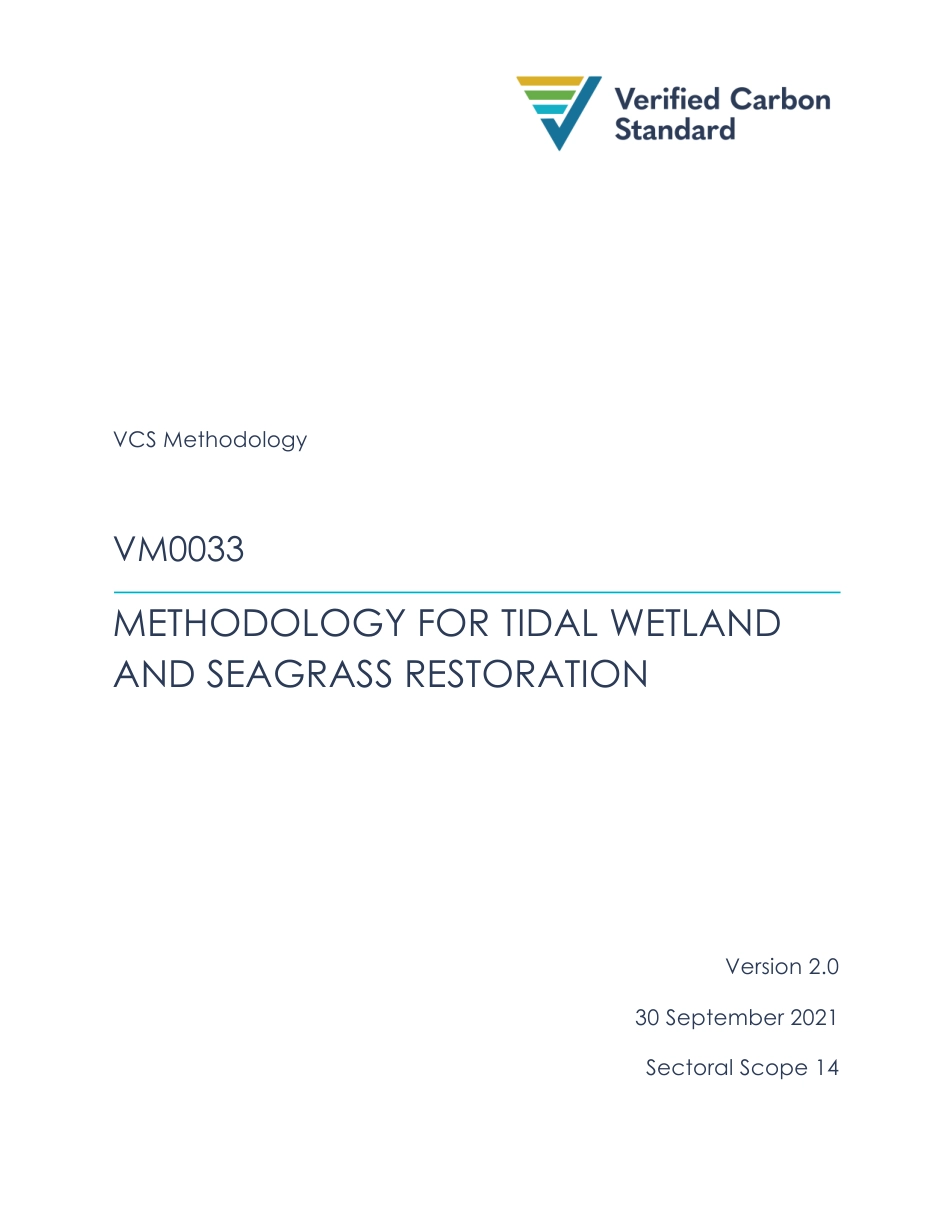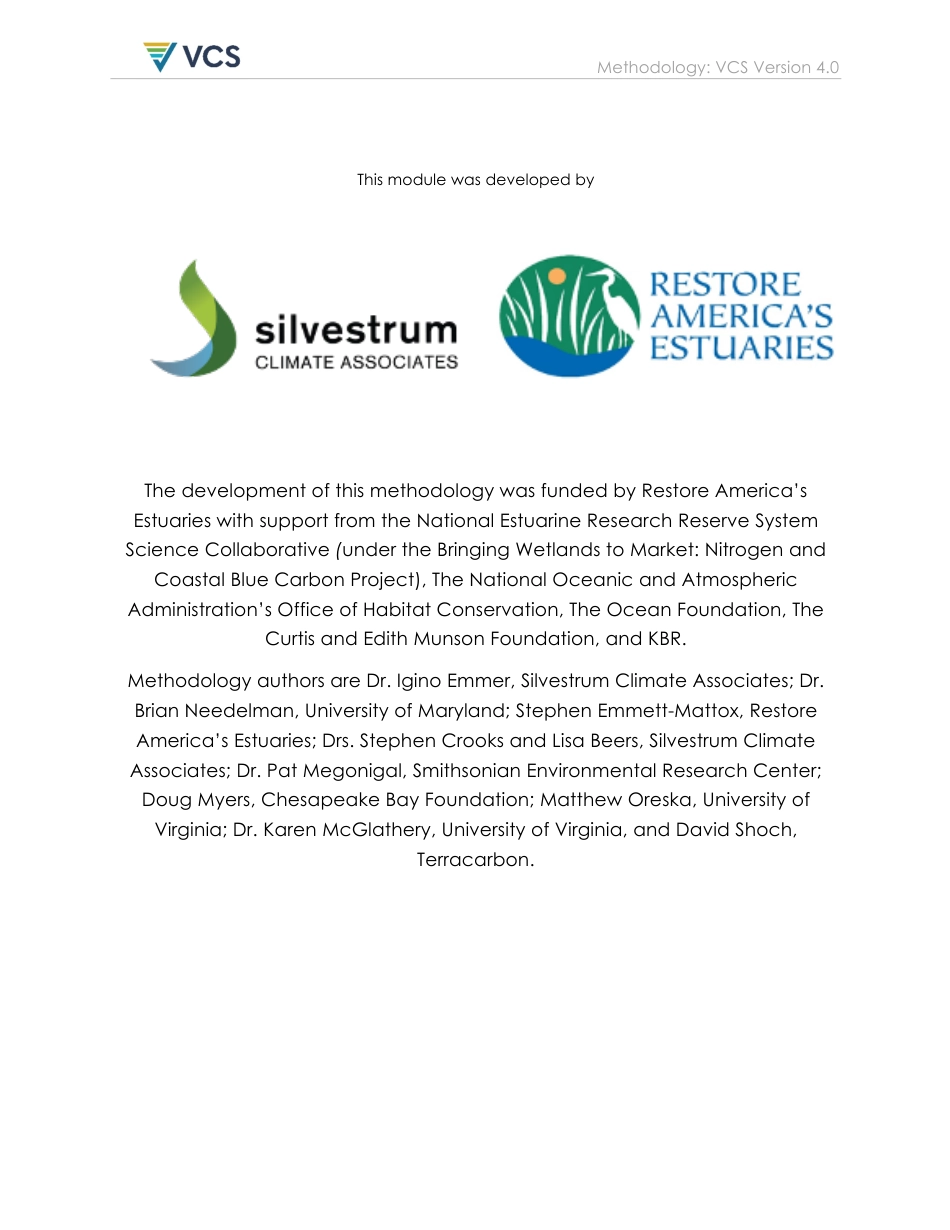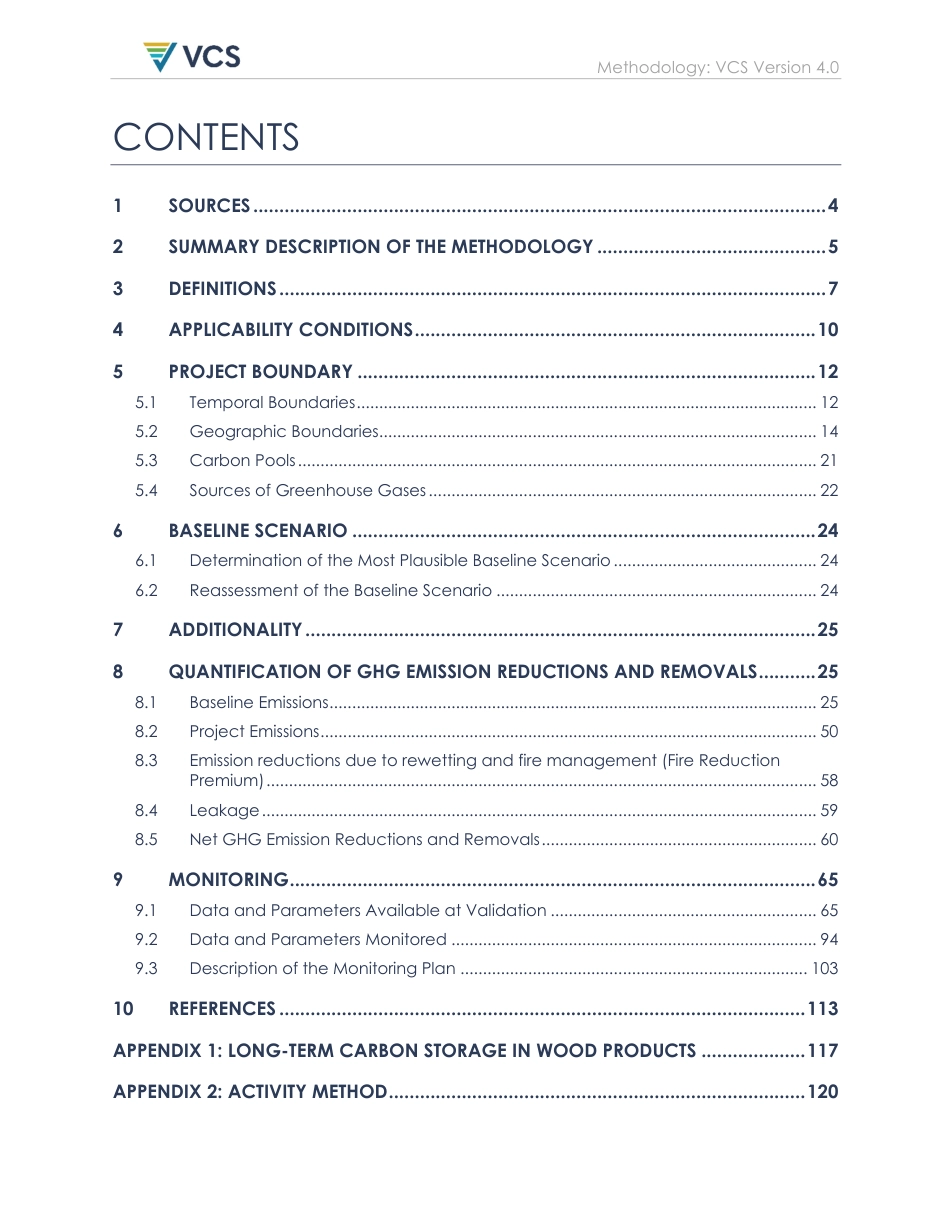VCS Methodology VM0033 METHODOLOGY FOR TIDAL WETLAND AND SEAGRASS RESTORATION Version 2.0 30 September 2021 Sectoral Scope 14 Methodology: VCS Version 4.0 This module was developed by The development of this methodology was funded by Restore America’s Estuaries with support from the National Estuarine Research Reserve System Science Collaborative (under the Bringing Wetlands to Market: Nitrogen and Coastal Blue Carbon Project), The National Oceanic and Atmospheric Administration’s Office of Habitat Conservation, The Ocean Foundation, The Curtis and Edith Munson Foundation, and KBR. Methodology authors are Dr. Igino Emmer, Silvestrum Climate Associates; Dr. Brian Needelman, University of Maryland; Stephen Emmett-Mattox, Restore America’s Estuaries; Drs. Stephen Crooks and Lisa Beers, Silvestrum Climate Associates; Dr. Pat Megonigal, Smithsonian Environmental Research Center; Doug Myers, Chesapeake Bay Foundation; Matthew Oreska, University of Virginia; Dr. Karen McGlathery, University of Virginia, and David Shoch, Terracarbon. Methodology: VCS Version 4.0 CONTENTS 1 SOURCES .............................................................................................................. 4 2 SUMMARY DESCRIPTION OF THE METHODOLOGY ............................................ 5 3 DEFINITIONS ......................................................................................................... 7 4 APPLICABILITY CONDITIONS ............................................................................. 10 5 PROJECT BOUNDARY ........................................................................................ 12 5.1 Temporal Boundaries ...................................................................................................... 12 5.2 Geographic Boundaries ................................



